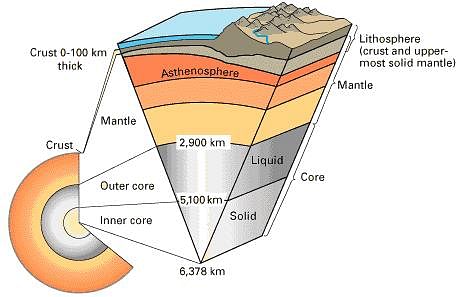Class 7 Exam > Class 7 Tests > Social Studies (SST) Class 7 > Test: Inside Our Earth - Class 7 MCQ
Test: Inside Our Earth - Class 7 MCQ
Test Description
10 Questions MCQ Test Social Studies (SST) Class 7 - Test: Inside Our Earth
Test: Inside Our Earth for Class 7 2025 is part of Social Studies (SST) Class 7 preparation. The Test: Inside Our Earth questions and answers have been
prepared according to the Class 7 exam syllabus.The Test: Inside Our Earth MCQs are made for Class 7 2025 Exam. Find important
definitions, questions, notes, meanings, examples, exercises, MCQs and online tests for Test: Inside Our Earth below.
Solutions of Test: Inside Our Earth questions in English are available as part of our Social Studies (SST) Class 7 for Class 7 & Test: Inside Our Earth solutions in
Hindi for Social Studies (SST) Class 7 course. Download more important topics, notes, lectures and mock
test series for Class 7 Exam by signing up for free. Attempt Test: Inside Our Earth | 10 questions in 10 minutes | Mock test for Class 7 preparation | Free important questions MCQ to study Social Studies (SST) Class 7 for Class 7 Exam | Download free PDF with solutions
Detailed Solution for Test: Inside Our Earth - Question 1
Detailed Solution for Test: Inside Our Earth - Question 2
Detailed Solution for Test: Inside Our Earth - Question 3
Detailed Solution for Test: Inside Our Earth - Question 4
Test: Inside Our Earth - Question 5
The inner and outer cores are together about 3500 km thick, and the core has a very high temperature and pressure. Why is the core also known as NiFe?
Detailed Solution for Test: Inside Our Earth - Question 5
Detailed Solution for Test: Inside Our Earth - Question 6
Detailed Solution for Test: Inside Our Earth - Question 7
Test: Inside Our Earth - Question 8
What type of rocks are formed when molten lava cools down rapidly on the earth's surface?
Detailed Solution for Test: Inside Our Earth - Question 8
Test: Inside Our Earth - Question 9
State whether the following statement is True or False:
The Deccan plateau is made up of sedimentary rocks.
Detailed Solution for Test: Inside Our Earth - Question 9
Detailed Solution for Test: Inside Our Earth - Question 10
|
61 videos|340 docs|46 tests
|
Information about Test: Inside Our Earth Page
In this test you can find the Exam questions for Test: Inside Our Earth solved & explained in the simplest way possible.
Besides giving Questions and answers for Test: Inside Our Earth, EduRev gives you an ample number of Online tests for practice






















